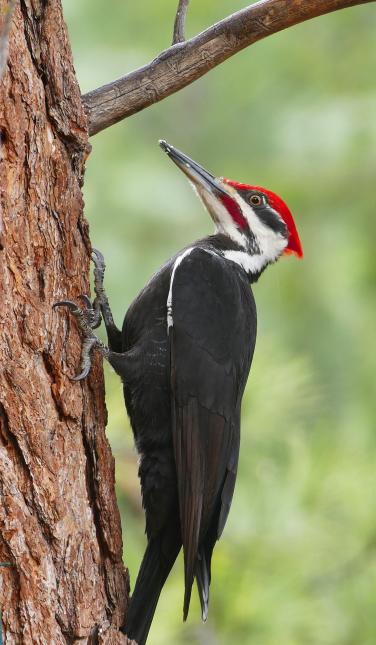Running Into Woodpeckers in Florida Types: Habitats and Habits
Running Into Woodpeckers in Florida Types: Habitats and Habits
Blog Article
Unveiling the Tricks of Woodpeckers: Actions, Habitat, and Much More
Woodpeckers, with their unique behaviors and specialized adjustments, have actually lengthy interested researchers and nature lovers alike. By discovering the secrets surrounding woodpeckers' behavior and habitat choices, a much deeper understanding of these bird marvels emerges, providing a peek into their fascinating globe.
Woodpecker Habits Insights
In analyzing woodpecker behavior, an interesting display of specialized abilities and adjustments emerges, losing light on their amazing eco-friendly specific niche. Woodpeckers, known for their unique drumming on trees, have a range of behavioral qualities that contribute to their survival and success in their atmosphere.
Furthermore, woodpeckers show a special feeding behavior identified by their ability to essence pests from tree bark using their specialized beaks. Their lengthy, barbed tongues help in capturing victim, while their solid neck muscles supply stability and precision during pecking motions. This feeding method allows woodpeckers to accessibility hidden insect larvae and extract them with remarkable effectiveness.
Habitat Preferences and Choice
What variables affect the habitat choices and choice of woodpeckers? One essential variable influencing woodpecker habitat selection is the accessibility of appropriate nesting websites. Woodpeckers usually like forests with a mix of mature trees that provide ample opportunities for dental caries excavation.
In addition, woodpeckers reveal a preference for habitats with a bountiful supply of food resources. They are primarily insectivorous, feeding on beetles, ants, larvae, and various other bugs discovered in decaying wood or tree bark. Woodpeckers tend to favor woody areas with a diverse insect populace to satisfy their dietary demands.
Moreover, the existence of dead or rotting trees is one more key factor in woodpecker habitat selection. These trees not just offer food sources yet also supply ideal substratum for tooth cavity excavation. Dead trees are important for the upkeep of healthy woodpecker populaces, as they play a crucial duty in the woodpeckers' life process and ecological community characteristics.
Feeding Practices and Diet Regimen Make-up
Woodpeckers show a specialized feeding behavior concentrated on foraging for insects within different habitats. In addition to insects, woodpeckers likewise consume tree sap, fruits, nuts, and seeds, including variety to their diet regimen depending on the season and availability of food resources.
The foraging strategies of woodpeckers are well-adapted to their arboreal lifestyle (Woodpeckers in Florida). Their ability to excavate wood not only provides them with food however likewise assists in producing nesting tooth cavities and establishing territories. try these out Woodpeckers play an important function in preserving the health and wellness of forests by controlling insect populations and aiding in the decomposition of timber. Recognizing their feeding behaviors and diet regimen structure is necessary for preservation initiatives targeted at preserving these distinct and important birds.
Drumming Appears and Interaction
Using rapid drumming audios on different surfaces, woodpeckers use an unique type of communication to signify region limits and attract friends. This drumming habits is not only a method of communication but additionally acts as a means for woodpeckers to develop their presence within a certain area. The strength, speed, and pattern of the drumming can convey vital info to other woodpeckers in the location.
Woodpeckers utilize drumming sounds to introduce their presence in a region and to caution off possible trespassers. The loud and repetitive nature of the drumming functions as a clear signal to various other woodpeckers that the area is currently claimed. This aids in decreasing problems and reducing physical battles between people.

Survival Adaptations and Specialized Anatomy

Final Thought
In conclusion, woodpeckers show one-of-a-kind habits, such as drumming noises for communication, and have actually specialized composition for survival in their chosen environments. Their feeding routines and diet make-up additionally demonstrate their adaptability to numerous atmospheres. By understanding these click resources facets of woodpeckers, researchers and conservationists can much better safeguard and preserve these interesting birds and their communities.
Report this page